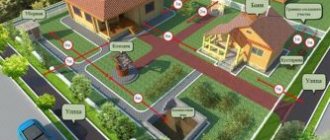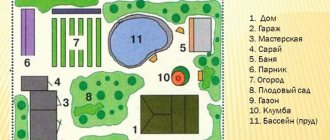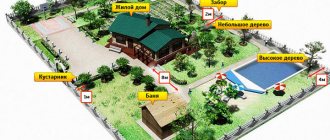If a person owns land, it is only a matter of time before the construction of a residential building or technical facility begins on it. Lands in our country are divided into categories according to their purpose. One of these categories is private subsidiary plots, or personal subsidiary plots.
It is understood that a person will use the land plot for the purpose of conducting agricultural, livestock or other business activities, but additional needs for certain premises constantly arise. Is a permit required to build a house in private household plots in 2020?
Sample construction permit
Compliance with project documentation
The right to construction and reconstruction is granted only by appropriate permission. It is a document that confirms the compliance of project documentation with the requirements established by urban planning regulations. The project considers sections on the planning of the structure and land surveying, unless otherwise established by the Civil Code of the Russian Federation.
A permit is issued in accordance with the Town Planning Code of the Russian Federation, Art. 51.
A correctly executed paper will contain:
- In the upper right corner there should be a note “Approved by Decree of the Government of the Russian Federation of November 24, 2005 No. 698.”
- Then there is information about the recipient of the permit - his last name, first name and patronymic, residential address, place of registration are indicated. If the recipient is a legal entity, its name is indicated.
- “Construction Permit” is printed in large letters in the middle of the sheet.
- Additional information includes: name of the authorized body that issued the permit; paper number; address of the private plot; capital construction facility.
- The validity period of the permit, as well as the extension period, if any, is indicated at the bottom.
It is better not to start construction without permission, as the building will be considered illegally built.
Do I need a permit to build private household plots?
Not everyone is eager to go through the authorities and begin construction without obtaining the appropriate permit. What are the risks of such an approach, and is it acceptable? According to the above article, permission is required. It is received when starting the construction or reconstruction of capital buildings on the lands of private household plots.
This term refers to any objects located on and under the ground, erected for permanent long-term use.
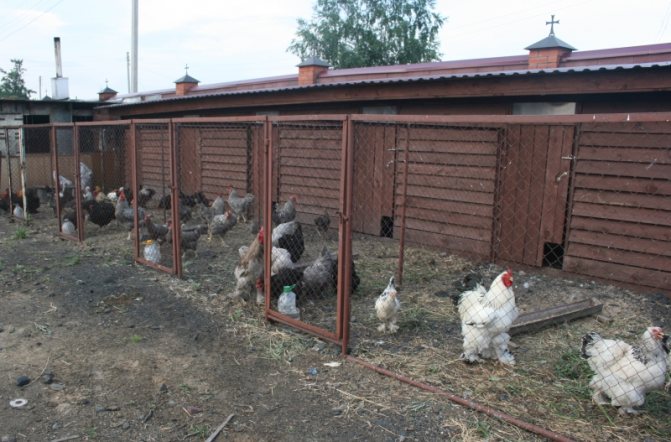
A capital chicken coop can be an object that is being built with a permit
In the case of the construction of auxiliary buildings, permission may not be required, but the law has a clause in this regard. If the building will have more than one floor or communications will be connected to it (electricity, gas, water, heating, sewerage), then, regardless of its purpose, construction is permitted only after receipt of documents. The same applies to extensions to permanent buildings.
All private household plots are divided into two types - household and field. The first includes areas located on the territory of populated areas, and the second - outside them.

Land categories
On personal plots, in addition to conducting agricultural activities and engaging in entrepreneurship, it is allowed to keep animals and build auxiliary buildings. For field lands, the construction of capital construction projects is prohibited. Any activity other than agricultural is prohibited. For this reason, before starting construction, you need to find out which category your site belongs to.
For field sites, the construction of any temporary structures is allowed - those that do not have a permanent foundation. The exceptions are lands that are listed as peasant farms - here the construction of buildings of any category is allowed.
In terms of purpose, private household plots are practically no different from individual housing construction. It is permissible to obtain permanent registration in a house built on such territory.
Standards that a building must comply with
Advice! Do not be afraid to contact the authorities for permission. In most cases, this procedure does not take much time. A construction ban can only be obtained in cases of direct violation of laws.
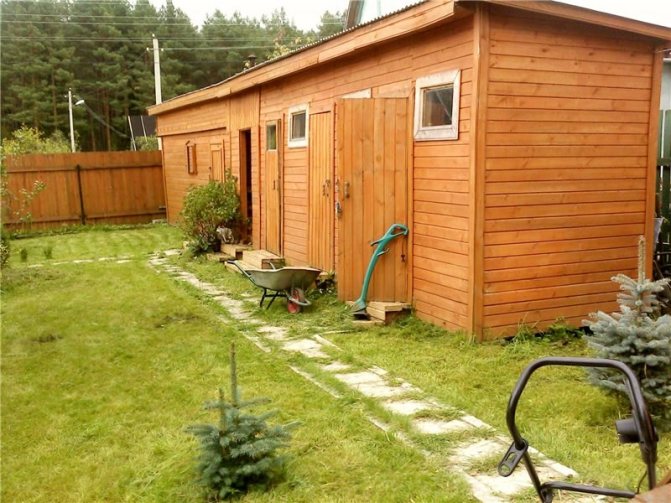
Such a barn is not a permanent structure, since it does not stand on a permanent foundation
A permit will be issued if the buildings meet the following requirements:
- The “red line” must be taken into account. This is the boundary of the site and the neighboring plot or common area. This line should not be crossed. Different buildings have their own setback from the border. Details about the distances can be found in the following diagram.
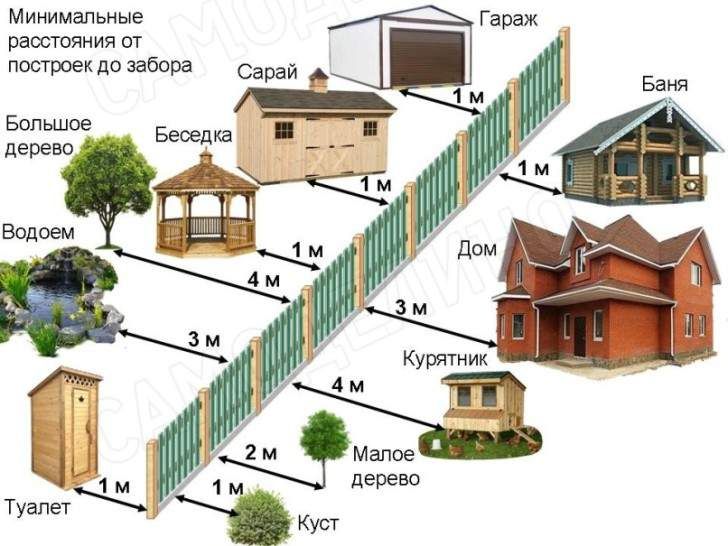
Legal distances to the property boundary
- In addition to these distances, the distances between buildings are also taken into account. They are established by sanitary and fire standards.
- The construction of local treatment facilities is permitted only if there is no central sewer line on the site.
- All buildings should not be more than three stories in height.
Regulation of construction on private household plot lands
The question of what can be built on the lands of private household plots is regulated by Federal Law No. 112 of 07/07/2003 “On personal subsidiary plots”. In accordance with this legal act, we can conclude that there is no particular difference between lands intended for personal farming and plots required for individual housing construction.
This trend can be seen in relation to private household plots located within the boundaries of a populated area. For “field” areas, restrictions still apply, because such land is recognized as agricultural. So, according to the law, the construction of a residential building on them is not allowed. The intended purpose of such territories is agricultural production without development rights.
The differences between the lands of individual housing construction and private plots located in populated areas were abolished in 2008. Then the Constitutional Court of the Russian Federation issued Resolution No. 7-P of April 14, 2008, which became generally binding.
The construction of buildings on the lands of private household plots within the boundaries of a populated area is permitted without additional approval or transfer of the site to another category. The land user has the right to build a residential building and auxiliary buildings if this does not violate the rights and legitimate interests of other citizens.
A citizen planning to develop a plot of private household plots must act in accordance with established sanitary and construction standards. He must observe all the required distances for the location of buildings so as not to create inconvenience to neighbors and not to contribute to environmental pollution.
What are the consequences of his absence
Many owners of private plots ignore the requirement to obtain permission, and almost always the matter ends in failure for them. Construction without permission is a direct violation of the law, for which punishment is provided. Depending on the situation, the following may happen:
- The BTI will refuse to register a capital structure and will not issue a cadastral passport.
- A certificate of ownership (today this is an extract from the Unified State Register of Real Estate) will not be issued, which means it will be impossible to register the right itself. Such situations are settled in court, but no one guarantees a positive outcome.
- The registration process, especially if you need to go to court, will be very drawn out and will require additional material costs.
- A fine may be issued for illegal construction, and they will do this repeatedly, until permitting documents are received or the building is demolished.
- If the building disturbs neighbors, does not comply with urban planning standards, is located in a protected zone, or is considered dangerous to human health, the court may require its demolition at the expense of the owner of the site.
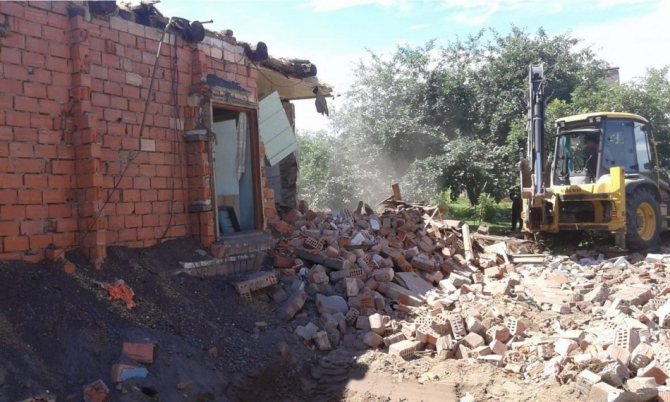
The fine for illegal construction for individuals is 1-5 thousand rubles; for officials – 20-50 thousand rubles; for individual entrepreneurs – 20-50 thousand rubles and the risk of suspension of activities for 90 days; for legal entities – from 500 thousand to 1 million rubles, and suspension of activities for 90 days.
Another problem is coordinating the construction with utility services. It will be almost impossible to provide communications to the construction legally. Illegal tie-ins are subject to heavy fines, and if the necessary construction standards are not met, it will be almost impossible to get approval without rework.
For these reasons, there is no benefit - neither temporary nor material - to engage in self-construction without affirmative documentation.
Cases when a building permit may not be required
The legislation specifies a number of cases when construction is allowed without obtaining permission to do so. They are indicated in paragraph 17 of the same 51st article of the Town Planning Code of the Russian Federation.
- Construction of a garage on territory officially owned by a person. In this case, the site will be used for personal purposes - living, gardening, and so on.
- Non-permanent structures, such as sheds, kiosks, light utility blocks without a foundation (drawings and design of the utility block are proposed in the article).
- Auxiliary buildings.
- Major repairs of the main structure, subject to compliance with safety standards.
- Drilling wells requires a different type of permission.
- Other cases when the Town Planning Code does not require permission.
Since a residential building is a registered real estate with which transactions can be made and to which communications are required, permission is always required for its construction on a private plot.
Permission to build a bathhouse on the lands of private household plots is not required, since this structure belongs to the category of auxiliary (read about the design and construction of a private bathhouse in the article). Although it is worth saying that a lot depends on the specific project. If gas, water, electricity are supplied to the bathhouse, it has large dimensions (two floors) and a solid foundation, then such a structure will already be considered the main one, and permitting documentation will be required for construction.
How to obtain permission to build a private household plot house
Now let's look at the step-by-step procedure for obtaining permission.
Procedure
According to the construction project, the order of work will be determined, as well as the start and end dates of construction. On this basis, a construction permit will be issued. To develop a project, you must contact a cadastral engineer. This specialist must have the appropriate certificate. This type of work is carried out by private specialized offices.
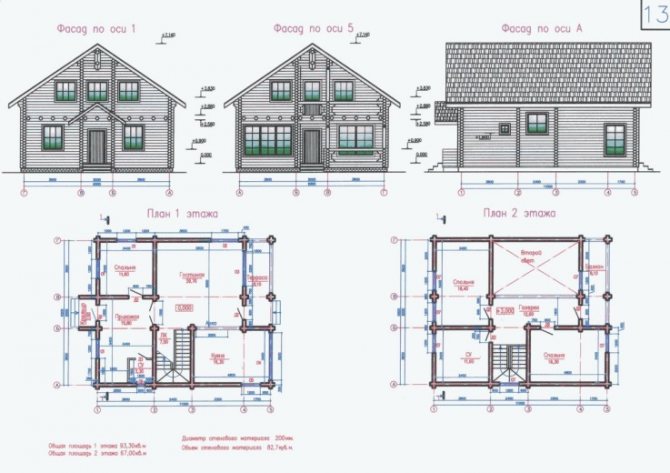
Project of a two-story house, commissioned by the bureau
You will need to conclude an agreement with the contractor under which the following points will be fulfilled:
- Analysis of title documents and verification of compliance of the planned construction with the category of land plot.
- Geodetic survey of the plot where construction will take place.
- Processing the results and drawing up a technical plan.
- Handing over documents to the customer.
If there are no queues at the design office, then this stage will take about a week. The cost of services depends on the prices of the contractor. A high-quality project for a residential building with details costs on average around 50 thousand rubles. Also, a lot depends on the type of structure and its dimensions.
Along with the project received in hand, it is necessary to visit Rospotrebnadzor, the fire inspectorate and utility services. If the document was drawn up by professionals, then there will be no problems with passing the authorities - this will take no more than two weeks.
Advice! When contacting the listed authorities, an identification document is required. There are no state fees for approval.
Package of documents
To obtain a construction permit, they apply to local governments. If for some reason you cannot resolve the issue with them, you can contact the executive power of the constituent entity of the Russian Federation or federal local executive authorities.
Changes and innovations in the Town Planning Code that are interesting for summer residents
And secondly, if, according to the new charter of your gardening, you are allowed to build a house - that is, you will have a gardening and not a gardening partnership, then all these dances with notifications concern your situation. Because your house will be considered by the state not as a “garden house”, but as a house for individual housing construction - according to the amended law. Your building fits the description of an individual residential building: “a separate building with a number of above-ground floors of no more than three, a height of no more than twenty meters, which consists of rooms and premises for auxiliary use, designed to satisfy citizens’ household and other needs related to their residence in a building like this." The most important sign is that you are planning a house for year-round use. So, yes: to start construction, you need to get a permit. Or in modern language - a notification, with all other steps in the form of response notifications.
We recommend reading: Conditions for registering auxiliary facilities 2019
The information of the developer is indicated, that is, yours (full name, place of residence, details of the identity document). Plot data - cadastral number of the plot, address of the plot, information about ownership and rights of other owners, if any (that is, if you have joint ownership with someone), information about the type of permitted use (this is written in the certificate of ownership - Apparently, you have it for gardening). Also write that by this notice you confirm that this building is an individual residential building and is not intended to be divided into independent real estate units. Specify the contact address - where you want to receive response notifications, postal, email.
Reasons for refusal
In any business there are pitfalls that can interfere with achieving results. And the issuance of a permit may be refused if:
- The applicant has no rights to the land - he is not the owner or the tenant.
- The documents do not correspond to the urban planning plan. For example, the object is not a permitted type of building, its parameters are not met, there are no minimum setbacks, and its location is within prohibited areas.
- The project was drawn up in violation of construction and reconstruction standards - permissible deviations were exceeded.
- The necessary documents and communication plan are missing.
- The facility was built before the permit was issued.
Documentary inaccuracies are quite easy to correct, which will still allow you to obtain permission. But with a finished building, especially if it is built in a security zone, they can act inhumanely - demand demolition through the court.
Those who did not violate any norms during self-construction will be very lucky - pay the fines, and the building will be put into operation. But this happens very rarely.
Advice! In case of refusal, the applicant can always appeal this decision in court, presenting convincing evidence of his innocence. This process is complex and can take a long time.
Options for obtaining documents after construction
Let us assume that the owner, at his own peril and risk, built an object classified as capital. Self-constructions are not recognized as the property of land owners in accordance with Article 222 of the Civil Code of the Russian Federation.

Excerpt from Article 222 of the Civil Code of the Russian Federation
For this reason, it is necessary to immediately go to court. To do this you need:
- Draw up a legally competent statement of claim.
- Collect all necessary documents confirming the safety of the structure.
- Conduct a construction examination that will establish that the building was built in compliance with all norms and regulations, including compliance with the setbacks from the boundaries of the site.
- Obtain permits from the fire inspectorate, SES and building department.
- Go through a court hearing.
If the court does not satisfy the applicant’s claim, then the building will be required to be demolished at his expense, so it is worth being prepared for such a development of the situation.
If the decision is positive, then the building can be registered, and an extract from the state register is issued.
How to register a house on a private plot
This article describes in detail how to register a house on a private plot, and everything you need to know about it. This article describes in detail what is needed to register a house on a personal subsidiary plot. Many residents of the country want to get their own individual home. Someone buys, and someone builds their dream home. But not everyone knows that it needs to be formalized correctly. Otherwise, if you do not register ownership of it, then in the future it will not be possible to sell it, donate it, or even rent it out. And if a new house is being built, then without registration it simply will not exist.
Private subsidiary plot – personal subsidiary plot. According to the law, it is allowed to buy or lease private farms with an area not exceeding 5 hectares. However, there are cases that this restriction is changed by the law of the constituent entities of the Russian Federation on which the site is directly located. But it is worth remembering that this limit can be increased no more than 5 times.
Field and garden plots
It is allowed to build residential premises and other buildings on a personal plot. You can engage in agricultural products. You are allowed to register here at your place of residence.
As for the field site, residential premises cannot be built on it.
The documents must indicate that the site is suitable for personal farming.
Construction permit
If a house is built on a private plot without permission, it will be impossible to register it in the future. So, if permission is received. After building a house, it must be registered. Registration without a building permit is only possible for non-residential properties. Also, you should not fill out documents for registration and build a house at the same time. It may be considered a squatter. In this case, the building will need to be dismantled.
Registration of a house on private household plots
To register, a house must meet the following requirements:
- Its height cannot be more than 3 floors;
- One family will live in it;
- The house is detached. It does not share facades with other objects. This applies to houses that are intended for two owners. One facade, but different entrances.
If you register the house as non-residential, then a permit will not be required. However, it will not be possible to obtain permanent registration in this house.
Required documents
The very first thing you will need for registration is a building permit.
After completion of construction, the remaining documentation is drawn up.
You must fill out a declaration. It will indicate:
- The area of all objects located on the site;
- Where the object is located, the exact location address;
- Purpose and name of the constructed objects;
- Network engineering;
- The material from which the external walls are made;
- For each object on the site, 2 copies of documentation are needed.
A document confirming land rights. It can be:
- Agreement on transfer of land from the municipality;
- Lease contract;
- Agreement of gift or sale;
- If ownership has already been registered, then there is an extract from the Unified State Register of Real Estate. Information about this should be in Rosreestr.
You will also need a technical plan for the house. Previously, a cadastral and technical passport were required. Nowadays such documents do not exist. The cadastral passport was replaced by an extract from the Unified State Register of Real Estate. The functions of the technical passport are performed by the technical plan. A registration certificate may only be required in the case of a mortgage loan.
You also need to pay a state fee. The documents must be accompanied by a receipt confirming payment.
After all the documents have been prepared, you must write an application to Rosreestr. All information about real estate is collected there. If there is no Rosreestr branch nearby, then you need to contact its territorial division. After submitting all the necessary documents, a legal examination is carried out. The decision is announced within 10 days.
The cost of registration itself comes down to paying the state fee.
But when preparing documents, it is worth considering that to prepare technical documentation for the house you will need to use the services of a cadastral engineer.
Sometimes it happens that there are no documents for a house.
What to do in this case? Registration in this case becomes more complicated. All necessary documents must be obtained. You will need:
- Confirmation of home purchase;
- Description of the land plot;
- A statement indicating a request to describe the boundaries of the site;
- Within a month, a document with designated boundaries will be ready. Next you need to register the house.
To do this you will need:
- Document showing the boundaries of the site;
- A document that confirms the purchase of a house;
- Application for acquisition of land;
- These documents are sent to the local authorities to which the territory in which the site is located belongs. In 2 weeks, documents confirming the right of ownership of this territory will be ready.
The registration process is simple, but you will have to tinker with documents. If you don’t have the time or desire to do this yourself, then you can contact specialized companies that will do everything quickly and without any problems.
In this article you learned how to register a house on a private plot. If you have any questions or problems that require the participation of lawyers, then you can seek help from the specialists of the Sherlock information and legal portal. Just leave a request on our website and our lawyers will call you back.
Editor: Igor Reshetov
